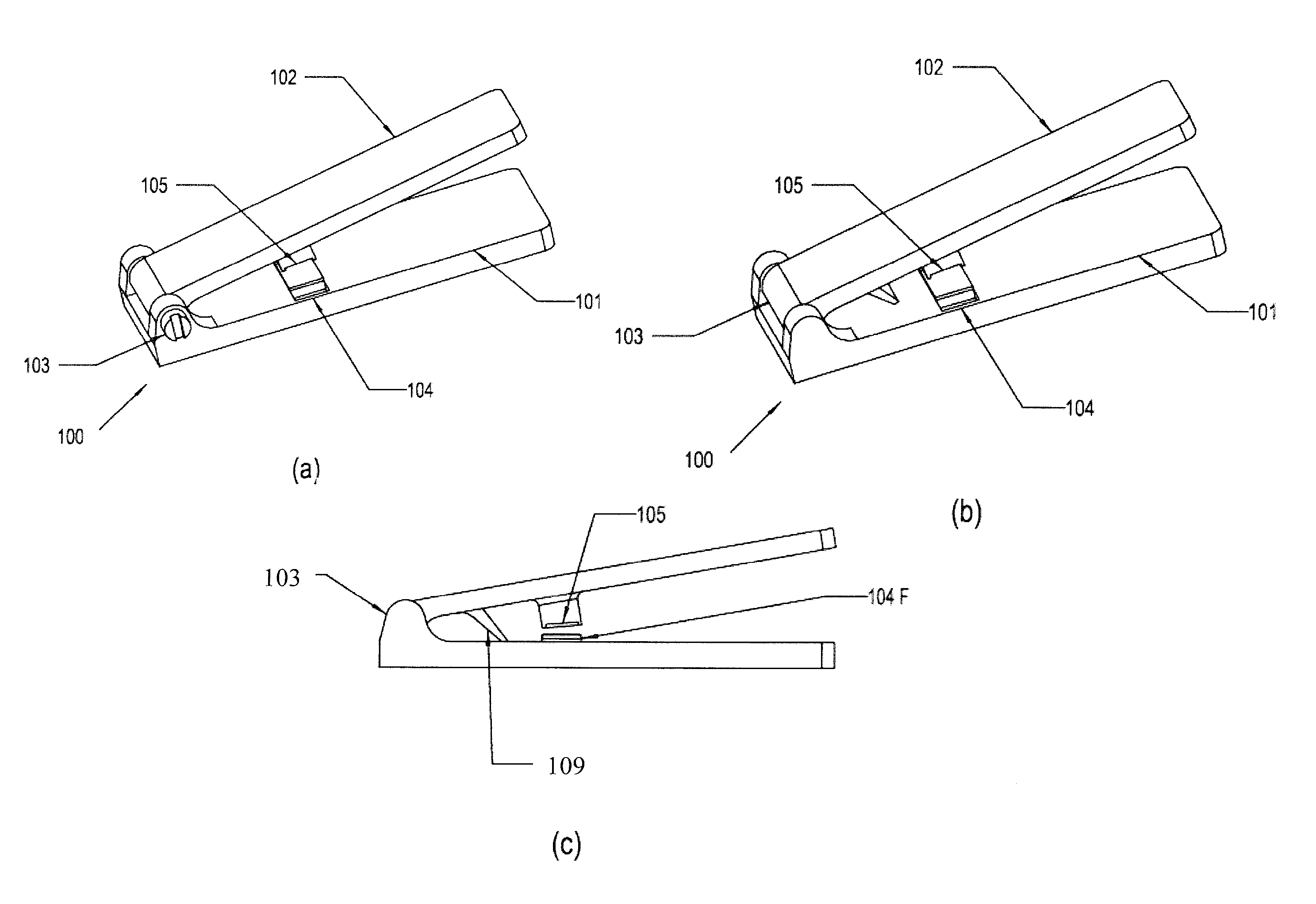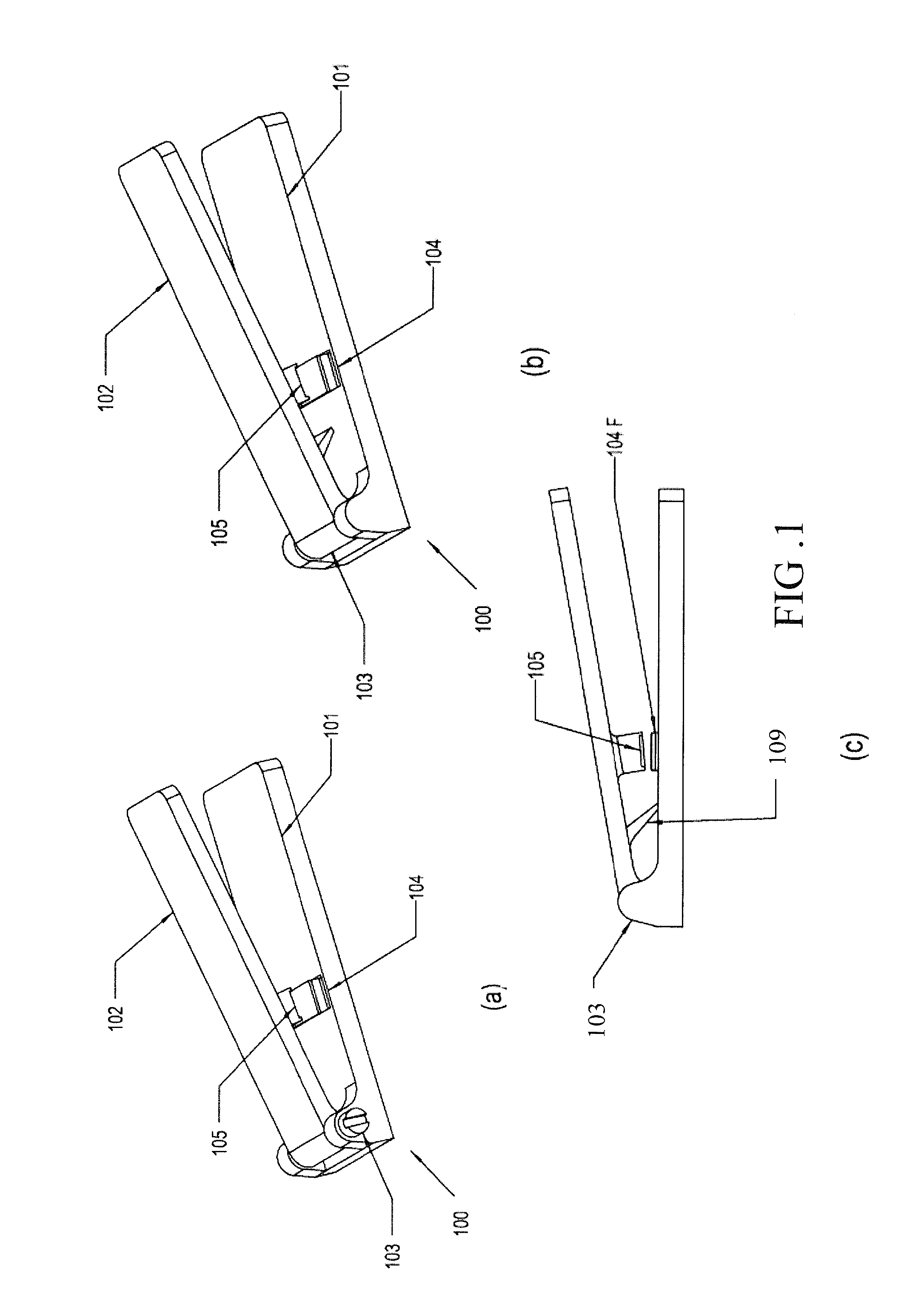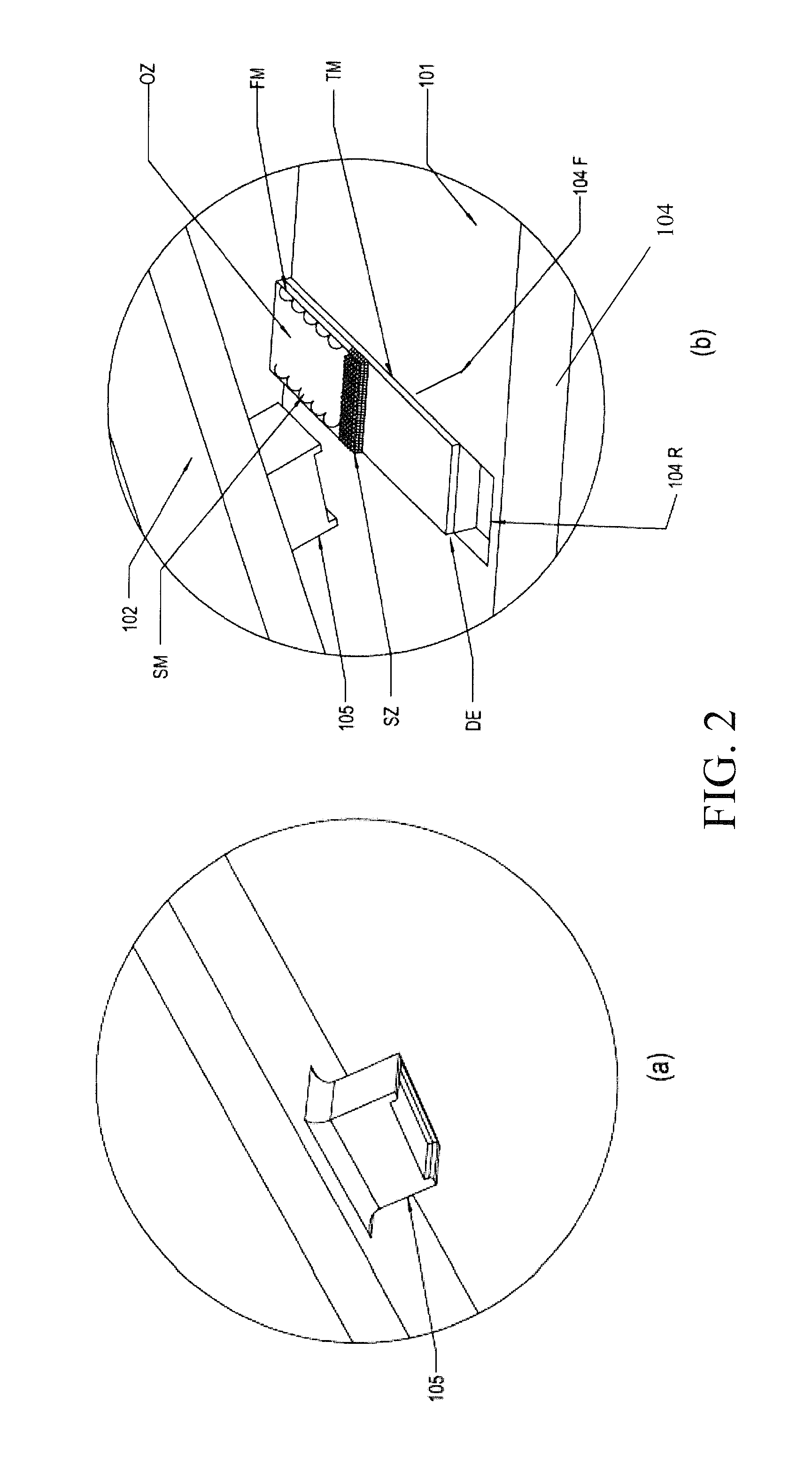Method and device for particle removal and droplet preparation for qualitative and quantitative bioanalysis
a bioanalysis and particle technology, applied in chemical methods analysis, filter regeneration, material testing goods, etc., can solve the problems of difficult to clean plasma, interfere with assay procedures, and separate equipment and technicians' time for separation of rbc, etc., to achieve rapid plasma yields
- Summary
- Abstract
- Description
- Claims
- Application Information
AI Technical Summary
Benefits of technology
Problems solved by technology
Method used
Image
Examples
first embodiment
[0043]FIGS. 3a and 3b show a schematic representation of first embodiment of this disclosure. Accordingly, the filter module (104F) capable of retaining particles of interest module (104F) may be a single layer of lateral flow filter (see FIG. 3a) or it may be a multicomponent filter module (see FIG. 3b). The multicomponent filter Module includes a plurality of functional layers which enhance the performance of the device. The layers may include a sample matrix (SM), a filter matrix (FM) and a transport matrix (TM) stacked one over the other as shown as an example in FIG. 3b. An open zone (OZ1) and a sealing zone (SZ1) are provided in the filter matrix (FM). The transport matrix (TM) includes a proximal end (PE) and a distal end (DE). The plunger block (105) is configured to press the distal end (DE) of the transport matrix (TM) when a user operates the press rod (102) to move the plunger block (105) to press against the filter module (104F). An example of operation of the filter mo...
second embodiment
[0049]FIG. 5 shows a schematic representation of filter module (104F) of this disclosure. In the example shown, the plunger block (105) includes a proximal end (105P) and a distal end (105D) wherein a projection (105A) is provided at the proximal end (105P) and / or on the edges of the plunger block (105) for making pinching contact with the transport matrix (TM) so as to minimize back flow and side flow of filtered fluid sample (Fb) into the filter matrix (FM). The droplet of filtered fluid sample (Fb) may be collected in the reservoir (104R). Alternatively, the filtered fluid sample (Fb) may be collected by gravity flow into a cuvette (not shown in FIG. 5).
third embodiment
[0050]FIG. 6a-6c show a schematic representation of filter module (104F) of this disclosure. Accordingly, the filter module (104F) includes a filter matrix (FM), a transport matrix (TM) and a capillary reaction and / or reading zone (RZ). The sample matrix (SM) may also be provided as shown in FIG. 6(b). A buffer zone (BZ) is provided in-between the distal end of the Transport Matrix (TM) and the capillary reaction and / or reading zone (RZ). The capillary force of the reaction and / or reading zone (RZ) is more than the capillary force of the buffer zone (BZ) but less than that of the Transport Matrix (TM). The capillary force of the buffer zone (BZ) is less than the capillary force of the Transport Matrix (TM).
[0051]The reaction and / or reading zone (RZ) may be a cuvette with capillary space of 0.025 to 0.5 mm which may contain reactants and also act as the zone for optical reading of the reaction products for quantitative analysis.
[0052]The reaction and / or reading Zone (RZ) may also be...
PUM
| Property | Measurement | Unit |
|---|---|---|
| channel height | aaaaa | aaaaa |
| capillary height | aaaaa | aaaaa |
| capillary force | aaaaa | aaaaa |
Abstract
Description
Claims
Application Information
 Login to View More
Login to View More - R&D
- Intellectual Property
- Life Sciences
- Materials
- Tech Scout
- Unparalleled Data Quality
- Higher Quality Content
- 60% Fewer Hallucinations
Browse by: Latest US Patents, China's latest patents, Technical Efficacy Thesaurus, Application Domain, Technology Topic, Popular Technical Reports.
© 2025 PatSnap. All rights reserved.Legal|Privacy policy|Modern Slavery Act Transparency Statement|Sitemap|About US| Contact US: help@patsnap.com



